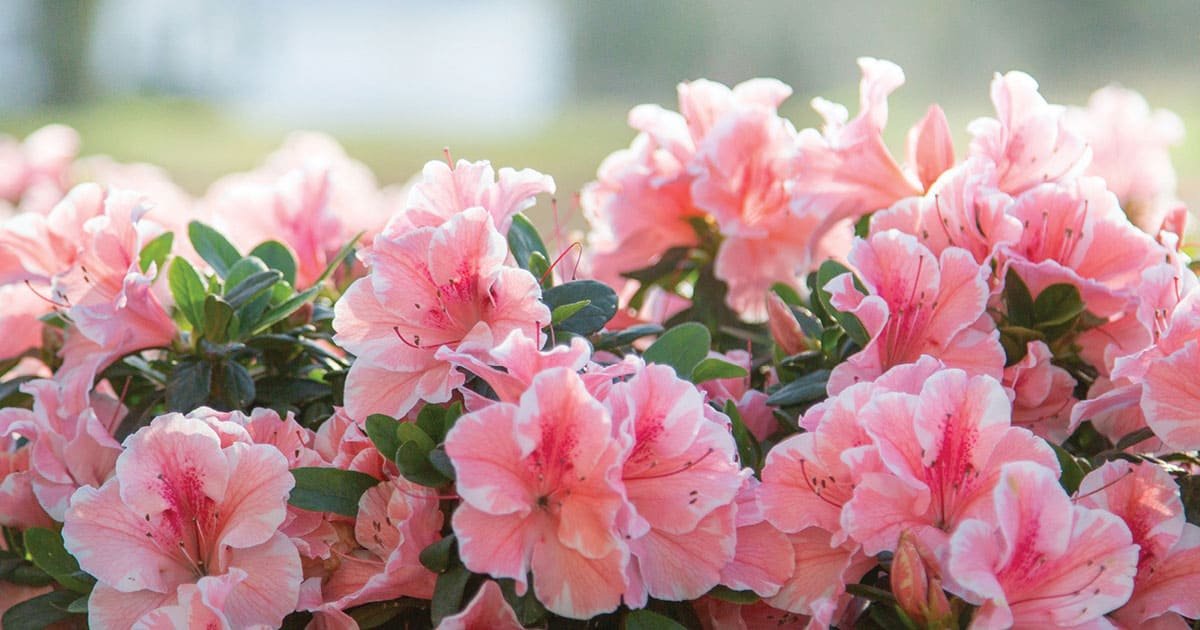
AZALEA
Azaleas are undoubtedly one of the most classic, beautiful, and prolific blooming plants available for your home or office. They are members of the genus Rhododendron, which hosts over a thousand different species.
Azaleas can be split into two broad categories: deciduous or evergreen. All the Azaleas that are hardy in our Utah climate are deciduous, losing their leaves every winter. Indoor Azaleas are evergreen, meaning they don’t lose their leaves seasonally, maintaining their foliage year-round. Most of these evergreen species are native to Japan, but can be found growing prolifically in the Southern United States.
WATER
Azaleas require consistently moist soil, but they should feel dry to the touch before you water each time (this does not mean it needs to be fully saturated all the time). In fact, it is important that the plant not be sitting in standing water, as it can cause root rot. Typically the soil can go dry about a centimeter down between waterings. Make sure to test the soil with your finger to ensure it is surface dry before watering. This gives the roots time to drink up the water in the soil, and allows the roots to breathe. Do not allow your azalea to dry out too much or it will likely drop many of its leaves and flowers. If you notice all of the flowers starting to wilt, test the soil to see if it needs a drink. This can be an indicator that the plant is too dry.
LIGHT
Bright light is needed to keep azaleas thriving, and is especially important for them to bloom. They prefer bright, indirect light throughout the day, but can also take a few hours of direct sun. In lower light, azaleas will thin out by dropping many of their leaves. If the plant has buds on it, they may drop before opening if not given enough light. Flowering is hard work, even for a plant that blooms as expertly as an azalea, and they need adequate light in order to photosynthesize and create energy to do so.
FERTILIZER
Feed your azalea often when your plant is healthy and growing. Fertilizing throughout the year will keep your azalea actively growing, and allow the plant to bloom more robustly. A bloom fertilizer is ideal, and azaleas can be fed with every watering when actively growing or blooming. Azaleas also tend to prefer more acidic soil, so supplementing seasonally with a high acid fertilizer can be beneficial.
SPECIAL NOTES
Azaleas respond well to pruning. Cut back after bloom and continue to trim and shape as needed. While in bloom, flowers will last much longer if the plant is kept cool (around 60F degrees).
Interested in more? Visit the Azalea society for more details and information: https://www.azaleas.org


